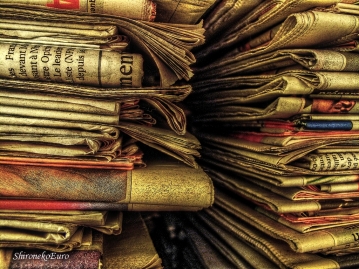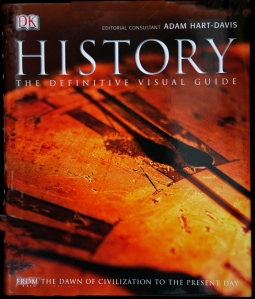– consists of all written material, excluding non-print resources, which convey planned course information. Examples of printed resources include, but are not limited to: textbooks, workbooks, reference books, magazines, newspaper, journals. There are 3 mechanisms on how to select print materials: 1. Appropriateness of the print material to the planned course 2. Readability of text and appropriateness of the vocabulary and content of the print material to the age/maturity level of the students for whom the material is intended. 3. The material shall be screened for accuracy of the content and shall be free of bias (sex, race, religion, ethnic) 
EXAMPLES OF PRINTED MATERIALS:
1. Book A book is a set of written, printed, illustrated, or blank sheets, made of ink, paper, parchment, or other materials, fastened together to hinge at one side.
History of Books:
- Antiquity- stone, clay, tree barks, metal sheets
- Tablet- flattened and mostly dry pieces of clay that could be easily carried, and impressed with a ( possible dampened) stylus.
- Scroll- Papyrus, a thick paper-like material made by weaving the stems of the papyrus plant, then pounding the woven sheet with a hammer-like tool
- Codex- A codex (in modern usage) is the first information repository that modern people would recognize as a “book”: leaves of uniform size bound in some manner along one edge, and typically held between two covers made of some more robust material.
- Manuscripts
2. Magazine Magazines are publications, usually periodical publications, that are printed or published electronically. (The online versions are called online magazines.)
3. Newspaper A newspaper is a serial publication containing news, other informative articles and usually advertising. A newspaper is usually printed on relatively inexpensive, low-grade paper such as newsprint. 
4. Photographs A photograph or photo is an image created by light falling on a light-sensitive surface, usually photographic film or an electronic medium such as a CCD or a CMOS chip. Most photographs are created using a camera, which uses a lens to focus the scene’s visible wavelengths of light into a reproduction of what the human eye would see.
Advantages of Print Materials
- Extremely portable.Print materials can be used in any location.
- High comfort level.Most students are very comfortable using print materials to learn.
- Cost effective.Print materials can be created and duplicated with little expense.
- Readily available.Many distance learning courses can take advantage of existing textbooks, thus saving the time and expense of creating custom materials.
Disadvantages of Print Materials
- No interactions.Print materials do not generally provide built-in interactions. Additional technologies, such as e-mail, must be supplemented.
- No audio/visual elements.Print materials are static and are not appropriate for teaching languages and visual concepts.
- Require reading skills.If the learners are non-readers or language skills are required, print materials will not be effective.
- Time delay.It may take days or weeks for printed matter to travel between student and teacher.
Guidelines for Incorporating Print Materials
- Distribute print materials well in advance. Although the mail system is generally quite reliable, issues may arise if the print materials are not distributed well enough in advance.
- Include clear directions for use.Students need to know exactly which print materials they are responsible for reading and the specified timeline.
- Require interactions.Print materials are inherently non-interactive. Therefore, you must design for the required interactions. In some cases, this may mean a specified timeline for e-mail messages, or a required number of postings to a listserve.
- Specify a timeline.Distribute a timeline for students to help them organize their study learning activities.
Community_Sessions_NSTA2011_Rubric-Handout
References:
_________________. (2013). Non-Projected Visuals. Retrieved from sites.google.com: https://sites.google.com/site/mariamalshanfari/nonprojectedvisuals
Gordon. (2006). Visual Media. Related Terminologies, 97-117.
Kalaing, B. (2009, November 13). Non-Projected Visuals. Retrieved from Slideshare.net: http://www.slideshare.net/guestfa6a767/nonprojected-visuals
Tayco, C. (2011, April 29). Non-Projected Visuals. Retrieved from Slideshare.net: http://www.slideshare.net/cheryl_tayco/non-projected









